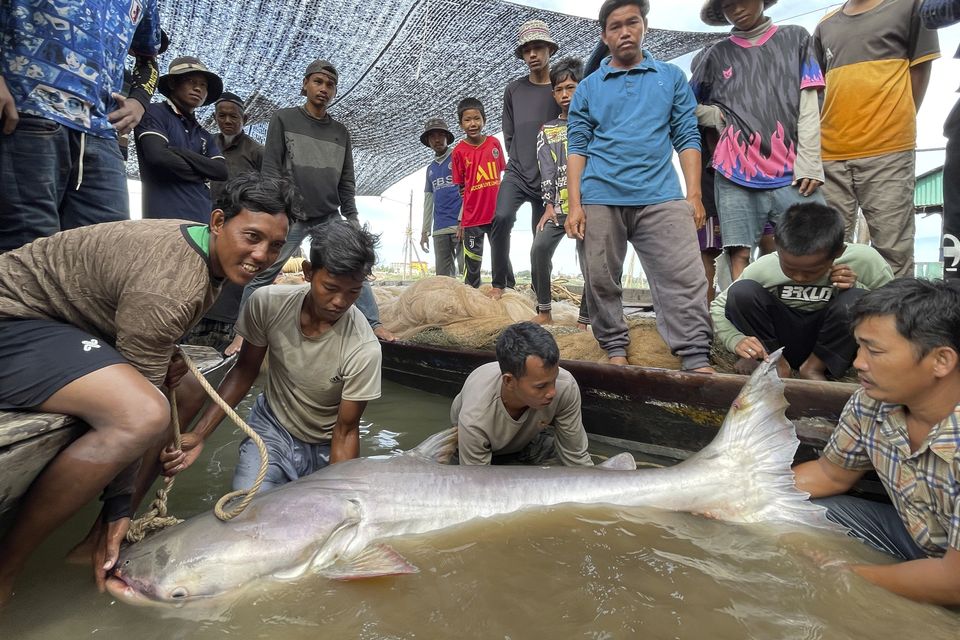Six critically endangered Mekong giant catfish – one of the largest and rarest freshwater fish in the world – were caught and released recently in Cambodia, reviving hopes for the survival of the species.
The underwater giants can grow up to 3m (10ft) long and weigh up to 300kg, as heavy as a grand piano.
They now are only found in south-east Asia’s Mekong river but in the past inhabited the length of the 3,044 mile-long river, all the way from its outlet in Vietnam to its northern reaches in China’s Yunnan province.
The species’ population has plummeted by 80% in recent decades due to rising pressures from overfishing, dams that block the migratory path the fish follow to spawn and other disruptions.
Fishermen show their joy as they pose with the Mekong giant catfish in Kampong Cham, Cambodia (Zeb Hogan, USAID Wonders of the Mekong Project via AP)
Few of the millions of people who depend on the Mekong for their livelihoods have ever seen a giant catfish. To find six of the giants, which were caught and released within five days, is unprecedented.
The first two were on the Tonle Sap river, a tributary of the Mekong not far from Cambodian capital Phnom Penh. They were given identification tags and released.
On Tuesday, fishermen caught four more giant catfish including two longer than 2m that weighed 120kg and 131kg, respectively.
The captured fish were apparently migrating from their floodplain habitats near Cambodia’s Tonle Sap Lake northward along the Mekong River, likely to spawning grounds in northern Cambodia, Laos or Thailand.
“It’s a hopeful sign that the species is not in imminent, like in the next few years, risk of extinction, which gives conservation activities time to be implemented and to continue to bend the curve away from decline and toward recovery,” said Dr Zeb Hogan, a University of Nevada Reno research biologist who leads the US Agency for International Development-funded Wonders of the Mekong project.
Much is still unknown about the giant fish, but over the past two decades a joint conservation programme by the Wonders of the Mekong and the Cambodian Fisheries Administration has caught, tagged and released about 100 of them, gaining insights into how the catfish migrate, where they live and the health of the species.
“This information is used to establish migration corridors and protect habitats to try to help these fish survive in the future,” said Dr Hogan.
The Mekong giant catfish is woven into the region’s cultural fabric, depicted in 3,000-year-old cave paintings, revered in folklore and considered a symbol of the river, whose fisheries feed millions and are valued at 10 billion US dollars (£7.9 billion) annually.
